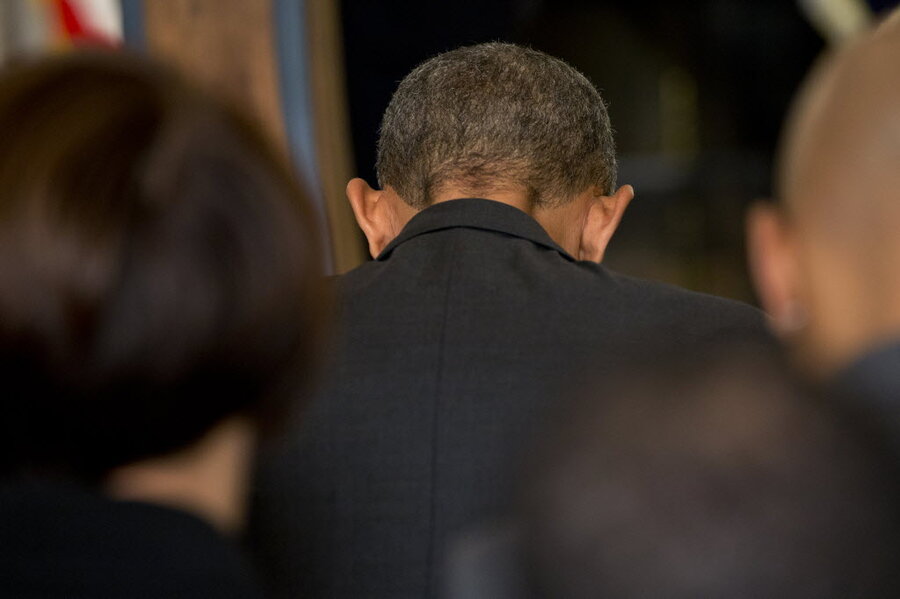Why prayer appeals to Americans
Loading...
For more than six decades, many Americans have participated in National Prayer Day, an event designated by law to fall on the first Thursday in May. But they may have done so with little knowledge of how many others pray or how they pray.
Over recent decades, studies have shown prayer is both widespread and meaningful. A Pew survey released in April, for example, found that among “highly religious” Americans, nearly 9 in 10 say they rely “a lot” on prayer to make major life decisions. For most Christians, regular prayer is “essential” to being a Christian. Even among the so-called nones, or those with no religious inclination, about 1 in 10 turns to prayer for help in making decisions.
The types of prayer also vary. They range from asking God for help to giving thanks and adoration to submission. A 2010 Gallup survey found those who pray more frequently felt “a secure attachment to God.” But as University of Akron sociologists Margaret Poloma and Matthew Lee wrote in a 2011 scholarly article, prayer is more than human activity. The authors cite the Apostle Paul who referred to praying as being “filled with all the fullness of God.”
The latest study on prayer may be the most insightful yet. In a statistical analysis of a 2010 survey, Dr. Jeff Levin of Baylor University finds nearly 9 of 10 Americans have relied upon prayer for healing at some point in their lives, either for themselves or for others. Such prayer, he found, may be the most common religious expression outside of belief in God. It is not a “fringe activity.”
And, he emphasizes, those who pray for healing are not only “the poor, uneducated, rural folks, or old people, or people who are suffering from a health crisis.” Rather, being religious determines a person’s level of prayer.
Dr. Levin looked at which kind of religious activity, such as reading Scripture or attending a service, might be the highest predictor that a person prays. He discovered that those with “a close connection to God, who love God and feel loved by God,” are more likely to pray for healing.
“Stronger affirmation of God as a loving being and past experience of feeling this love make one more likely to tap into God’s love to make it manifest in one’s life,” he wrote in the Journal of Religion and Health.
Most researchers miss this “subtext of spirituality” in American life, he states. “For active believers and people of faith, prayer, including for healing, is more than a situationally motivated response to one’s own suffering; it is an ongoing expression of piety and of taking up the yoke to be of service to others by acting as a liaison or advocate between suffering individuals and God,” he concludes.
So for this year’s National Prayer Day, Americans who pray – either a lot or a little, either for something or with affirmation – now know more clearly they are in good company, with plenty of fellow prayers but most of all, a loving God.





